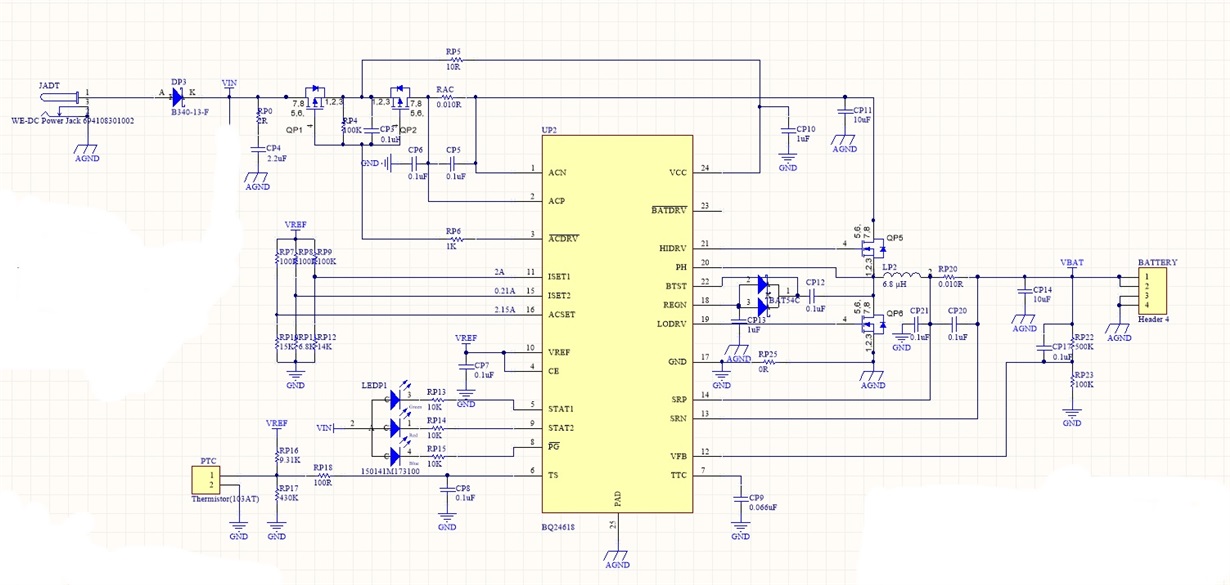Hi
I need your opinions and help about my circuit design. Here below is my projects charger part scheme. I am not a electronic engineer and not much experienced in electronics so i advised by an EE during design.
Circuit using TI's BQ24618 IC.
I want to use this circuit to charge 4s2p Li-ion (3.7V 3000mAh samsung 18650 * 8 Li-ion batteries so 14.8V and 6000mAh) battery pack with 20V 2A wall adapter. Battery pack has included protection PCM.
I printed and soldered PCB. Here is my problems.
Charger circuit acting as charging. green led (stat1 ) and blue led (PG) on. But never complete charge after hours (theoretically green led get off and red led - stat2 - get on when charge completed is not it? ) Also the circuit was cold during all charging process so i think cirucit is not working.
Then I realised the resistance RP22 is wrong. RP22 must be arround 700K for charging 4 cell . I tought that i designed the circuit wrong and this circuit can be use for 3 cell li ion. So i tried to charge a 3s2p li ion battery pack. That time i quess circuit is working. A little heat on circuit. After a couple hours green and blue light started to blink. So I thought the circuit is failing again am I wrong ?
Also circuit has a LM2476-5.0 part with usb output for charging cell phones or etc.
When i attached battery pack to Circuit it seems i can get 5v from USB output. I can power up an arduino or teensy. But i can not charge an iphone from USB ? What can be cause problem?
Can you please evaluate the circuit design and give me advices? Any advices, opinions, helps needed.
Thank you very much.


